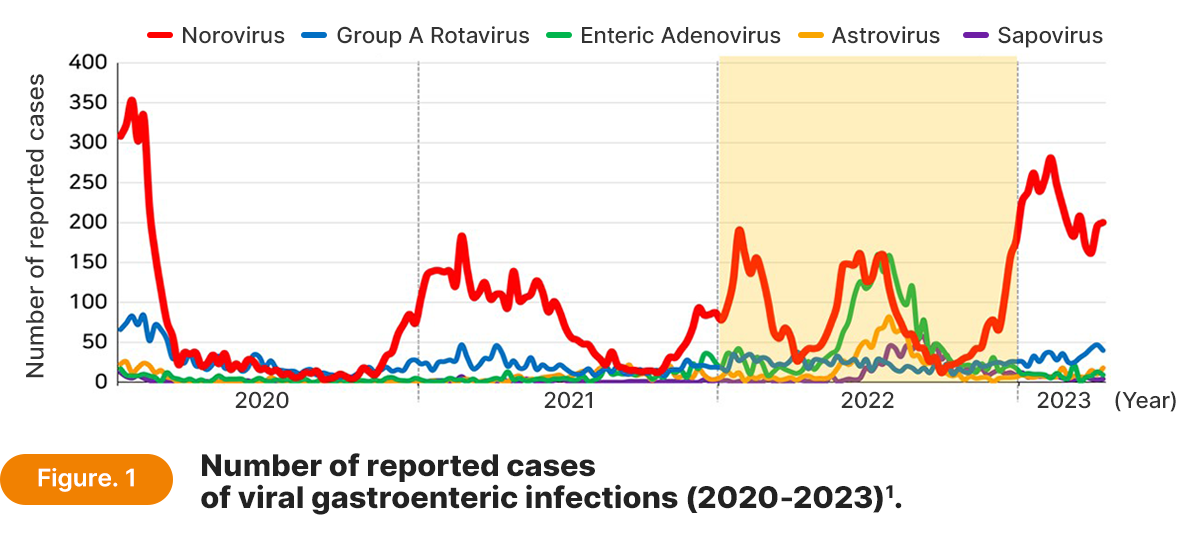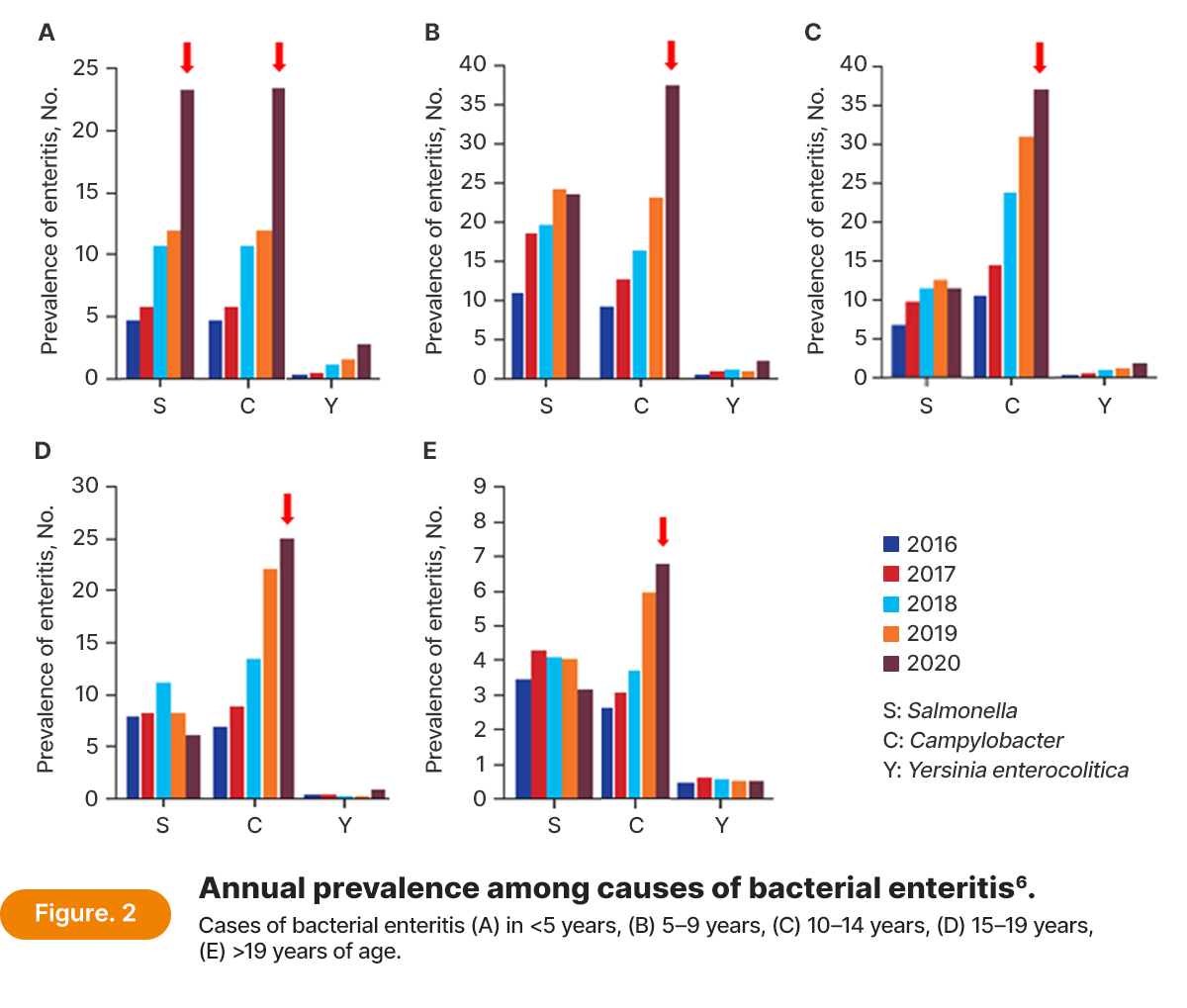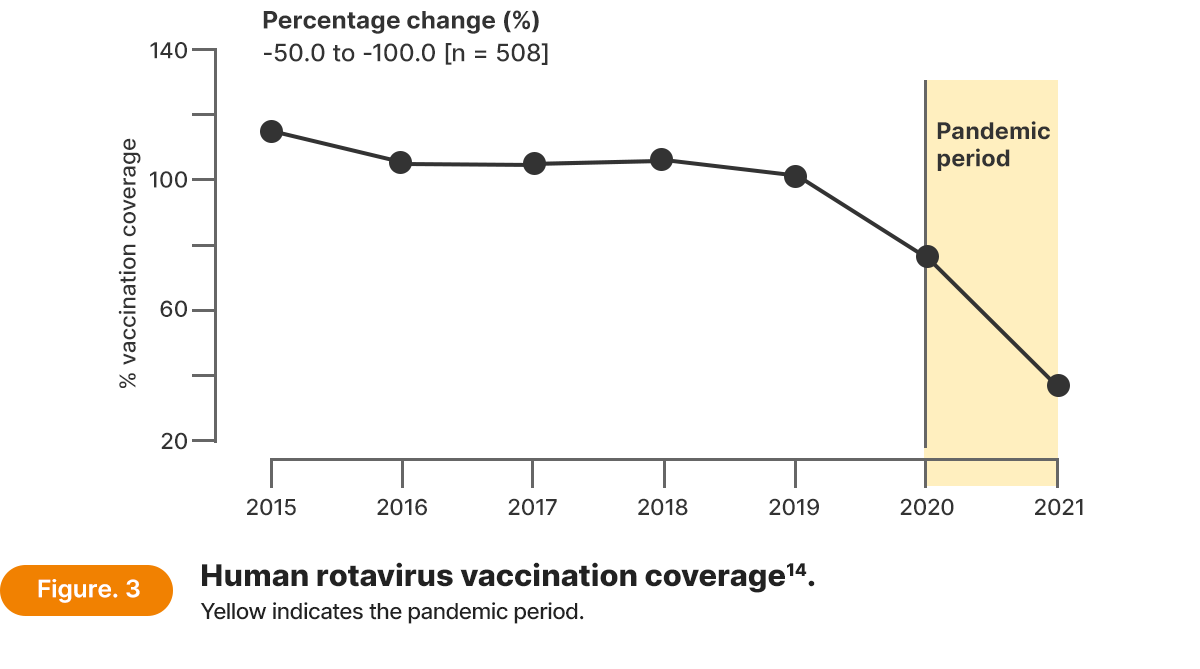Time is now, prepare GI uncertainties brought by COVID-19


Immunity gap could cause unpredictable GI outbreaks
The COVID-19 pandemic has increased preventive measures such as wearing masks and social distancing and further exacerbated health inequalities by disrupting essential health services and interventions such as vaccinations¹⁰. The reduced exposure to such pathogens may have led to an immunity gap, reducing the opportunity for immunity development, which may increase the risk of unpredictable outbreaks of GI infections¹¹‧¹².
The immunity gap for vaccine-preventable diseases is compounded by decreases in childhood vaccinations resulting from pandemic-related disruptions to healthcare delivery¹¹. For instance, the percentage of children aged five months up-to-date on all recommended vaccines has decreased in the US from two-thirds during 2016-2019 to less than half in May 2020¹³.
Moreover, the vaccination coverage of human rotavirus (HRV) dropped to 29.6% in Brazil in 2021 (Figure. 3)¹⁴, further widening the immunity gap. This immunity gap could lead to future outbreaks of GI infections, particularly among vulnerable populations¹².

Upgrade your healthcare system's capacity to manage unusual outbreaks with Seegene solutions
The Seegene Allplex™ Gastrointestinal Panel Assays, composed of 4 different panels, is the right diagnostic tool that can rapidly detect 25 gastrointestinal pathogens, including viruses, bacteria, and parasites. We guarantee Seegene’s GI solution can help healthcare providers mitigate this risk by facilitating prompt diagnosis and treatment of GI infections, reducing the potential for outbreaks and the resulting burden on healthcare systems.

1KDCA Infectious Disease; 2KDCA, PHWR (week 13, 2023); 3CDC, NoroSTAT Data; 4CDC, Norovirus National Trends; 5UKHSA, National norovirus and rotavirus report (8 January 2023); 6Hyunseok Cho et al., 2023; 7Nicola K Love et al., 2021; 8Logan C. Ray et al., 2021; 9Brendan Dougherty et al., 2023; 10Anita K Kambhampati et al., 2022; 11Robert Cohen et al., 2021; 12Kevin Messacar et al., 2022; 13Cristi A Bramer et al., 2020; 14Larissa Lima Barros et al., 2023;
Follow us on social media
